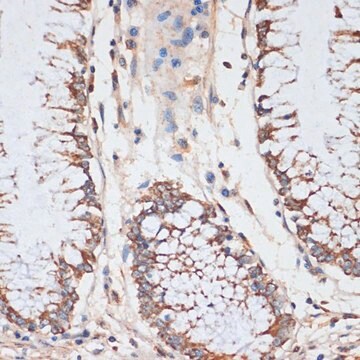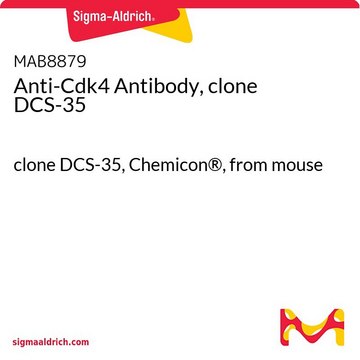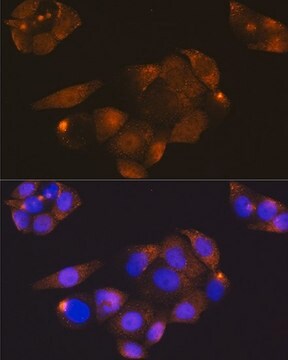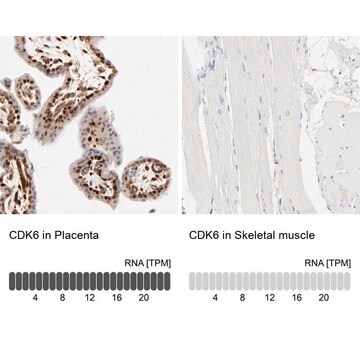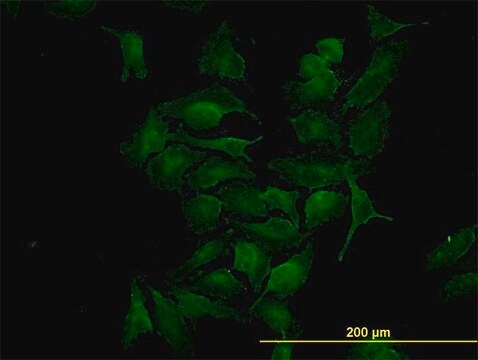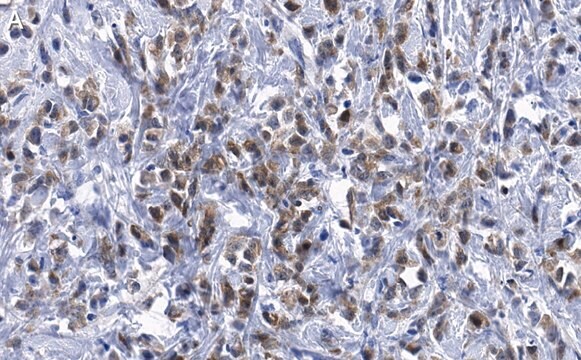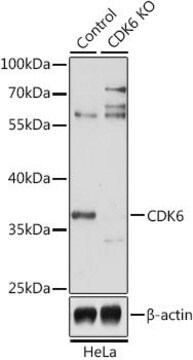C8218
Monoclonal Anti-Cdk4 antibody produced in mouse
clone DCS-31, ascites fluid
About This Item
Recommended Products
biological source
mouse
Quality Level
conjugate
unconjugated
antibody form
ascites fluid
antibody product type
primary antibodies
clone
DCS-31, monoclonal
mol wt
antigen 33 kDa
contains
15 mM sodium azide
species reactivity
rat, mouse, human
technique(s)
immunocytochemistry: suitable
immunoprecipitation (IP): suitable
microarray: suitable
western blot: 1:1,000 using a cultured human tumor cell line extract
isotype
IgG2a
UniProt accession no.
shipped in
dry ice
storage temp.
−20°C
target post-translational modification
unmodified
Gene Information
human ... CDK4(1019)
mouse ... Cdk4(12567)
rat ... Cdk4(94201)
Related Categories
General description
Specificity
Immunogen
Application
- immunoprecipitation of human melanoma cell line.
- immunofluorescence of fibrosarcoma cells.
- western blot analysis
- immunofluorescence
- immunohistochemistry
Biochem/physiol Actions
Disclaimer
Not finding the right product?
Try our Product Selector Tool.
recommended
Storage Class Code
10 - Combustible liquids
WGK
WGK 3
Flash Point(F)
Not applicable
Flash Point(C)
Not applicable
Choose from one of the most recent versions:
Already Own This Product?
Find documentation for the products that you have recently purchased in the Document Library.
Articles
Quantitative and qualitative western blotting to validate knockdown by esiRNA. Sigma-Aldrich.com
Our team of scientists has experience in all areas of research including Life Science, Material Science, Chemical Synthesis, Chromatography, Analytical and many others.
Contact Technical Service